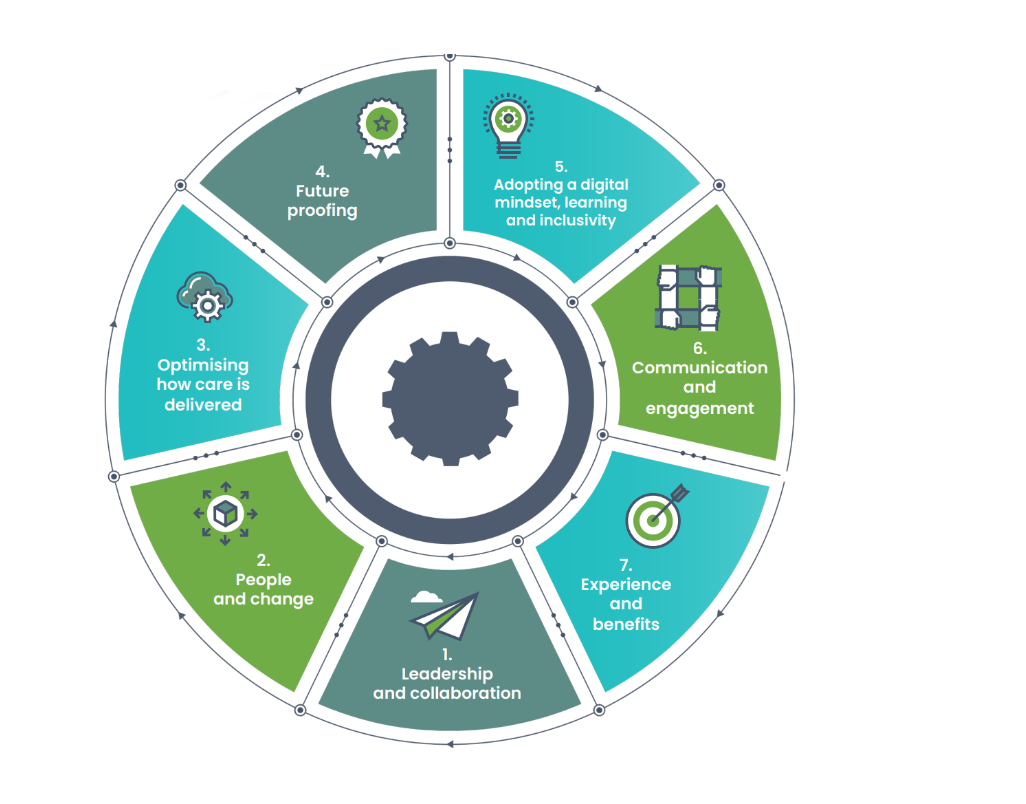The Myth of Digital Readiness: Why Sir Jim’s Intervention Is Long Overdue, according to Tracey Watson, CEO, at Ethical Healthcare Consulting.
Let’s be honest – it raised a few eyebrows when HSJ revealed that NHS England chief Sir Jim Mackey will now personally sign off all major hospital IT deployments. But maybe it shouldn’t have.
Because “digital readiness” in the NHS has too often been a box-ticking exercise – an illusion of progress wrapped up in PowerPoint slides and project plans.
For years, we’ve measured success by milestones that look good on paper: contracts signed, systems configured, switch flipped. Cue the press release, the ribbon cutting, the obligatory “go-live” photo. Meanwhile, frontline staff are left wrestling with clunky systems and collapsing workflows.
Sir Jim’s move isn’t overreach. It’s a reality check. It’s a recognition that digital deployment has become too casual about its consequences.
As one senior NHS leader put it bluntly:
“We as a system need to pull our fingers out, invest in the training, job planning and process re-engineering, and make sure we’re really seeing and feeling the benefit, not a productivity loss.”
Spot on – but the problem cuts deeper. Everyone knows training, backfill, and change management matter. The issue is that we still treat them as “nice-to-haves.” When budgets tighten, the people workstream is always the first to be cut. And we wonder why adoption falters.
Too often, providers juggle multiple major change programmes at once, with the same workforce expected to “lean in” to all of them – on top of keeping the lights on.
Readiness Isn’t a Sign-Off, It’s a Culture
Accountability for readiness is absolutely the right call – but let’s be clear: readiness is not a checklist you complete three weeks before go-live. It’s a discipline that should run through every stage of programme delivery.
The moment you call an EPR deployment an “IT project”, you’ve already lost. Because if clinicians only meet the system a few weeks before it goes live, don’t be shocked when elective performance tanks, morale nosedives, and patient safety flags start waving.
For too long, we’ve measured success by the wrong metrics:
- On time?
- On budget?
- Everyone miserable and productivity down 20%?
The real indicators of failure emerge after the confetti settles – in patient safety incidents, staff burnout, usability nightmares, and evaporating ROI.
And let’s not pretend that centralising readiness sign-off will magically fix that. A command-and-control model risks doing what bureaucracy always does best: slowing things down and distracting everyone from what really matters.
Time to Treat Readiness as a Discipline, Not an Afterthought
At Ethical Healthcare, we’ve argued for years that digital transformation is safest – and most successful – when readiness is treated as a professional discipline in its own right. Not a checklist. Not an admin task. A core competency.
Because the truth is simple: technology doesn’t fail. We fail to prepare people to use it.
Ethical Healthcare’s Seven Pillars of Readiness
Our approach is built around seven pillars that together determine whether a transformation programme thrives or destabilises performance:
-
Leadership & Collaboration – Ensure senior leaders and stakeholders understand, align, and engage in the transformation process and their roles in it.
-
People & Change – Build the necessary skills, capacity, and culture to support transformation and effectively manage organisational change.
-
Future Proofing – Assess and strengthen technical readiness and digital maturity to sustain long-term strategic goals.
-
Optimising How Care is Delivered – Redesign and improve care delivery processes, workflows, and governance to enhance efficiency and outcomes.
-
Adopting a Digital Mindset, Learning & Inclusivity – Prepare the workforce for digital transformation through training, inclusivity, and accessible learning opportunities.
-
Communication & Engagement – Establish clear, consistent communication and engagement strategies to foster collaboration and support cultural change.
-
Experience & Benefits – Develop systems to monitor, evaluate, and optimise performance and benefits from transformation initiatives.
Readiness in Action: The Sheffield Story
Earlier this year, Sheffield Health and Social Care NHS Foundation Trust faced a difficult challenge: relaunching its EPR after a previous attempt faltered.
With only a few months to go and confidence low, the trust made a deliberate choice – to prioritise readiness over speed.
We worked with the trust to strengthen engagement and staff confidence through:
- On-site roadshows that brought training and dialogue directly to clinical teams.
- Sentiment tracking to adapt messages in real time.
- Leadership webinars and a “Rio Champions” network to spread confidence peer-to-peer.
By go-live, 93% of staff said the engagement helped them prepare, and 69% reported growing confidence using the new system.
The rollout went live safely, on time, and with minimal disruption to services.
“The team’s proactive, hands-on approach was fundamental to a successful implementation.”
– Simon Barnitt, Chief Nursing Information Officer, SHSC
That’s what readiness looks like: measurable, human-centred and built on shared ownership.
From Risk to Resilience
Our experience shows that high organisational readiness can:
- Enable faster, smoother stabilisation post–go-live
- Maintain “business as usual” activity during implementation
- Increase workforce confidence and retention
- Accelerate adoption and benefits realisation
Readiness isn’t a soft concept. It’s a measurable safety and productivity metric – and it’s rapidly becoming central to how success is judged. The challenge now is to bring readiness forward – embedding it at the start of every digital programme, not the end.
Because when organisations invest in their people, planning and processes from day one, digital transformation stops being disruptive and starts being dependable.
—
Find out more about what we do here and get in touch if you would like to discuss how we can help with your digital transformation project.
